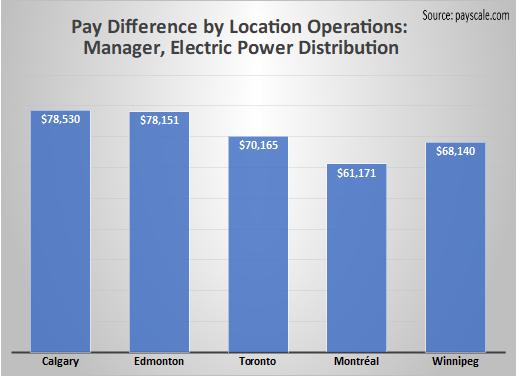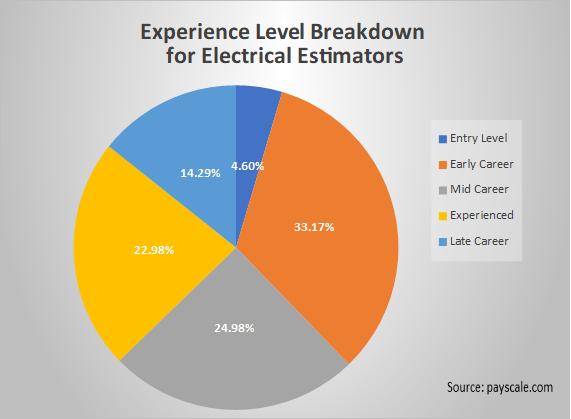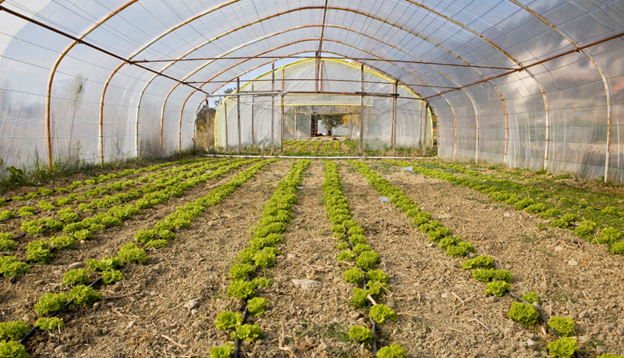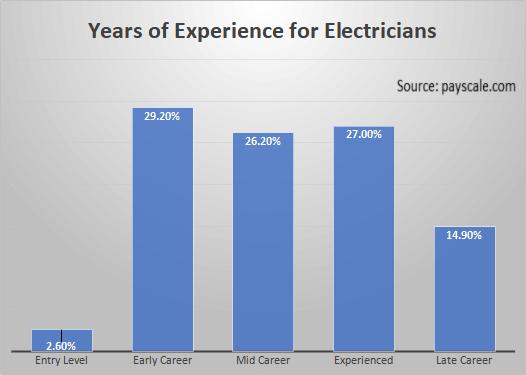What is the Right Temperature Set Point for My Electrical Enclosure?

May 16, 2019
Cooling units are necessary for hot enclosures, but selecting the proper temperature set point for yours can mean the difference between failure and enhanced performance
Electrical enclosures serve to protect electrical devices from adverse environmental influences, such as dirt, other particulates, moisture, or chemicals that could damage components. Plus, by housing electrical devices inside a secure enclosure or box, personnel are protected from electrical hazards such as electric shock, arc flash, and burns. However, electrical devices generate heat as a byproduct of their operation. When the heat load of the electrical devices within an enclosure exceeds the heat dissipation achieved through natural convection, the temperature inside the enclosure will rise. Since the performance and lifespan of electrical devices will degrade as temperature increases, this excessive heat must be removed in order to keep the temperature within acceptable operating limits. The “rule of thumb” warns that for every 10° C over their rated temperature limit, the life expectancy for electrical components gets cut in half.
When convection cooling would fail to successfully regulate temperature in an enclosed environment, cooling units can preserve the lifespan and performance of enclosed electrical components. Cooling units provide closed-loop cooling, using a refrigeration cycle to move heat to the outside of a sealed enclosure while maintaining the enclosure’s mechanical isolation from the ambient environment. Excessive moisture condenses on the evaporator, located on the enclosure side of the closed loop, where it can be effectively removed to keep the humidity level down and electrical components dry. These functions usually provide great value; however, too much of a good thing can diminish the efficacy of these units—and actually damage components. To avoid risking the safety and efficiency an enclosure is designed to ensure, operators must optimally set the temperature set point for any enclosure cooling unit.
When to Use a Cooling Unit for an Electrical Enclosure
 Many components commonly housed within electrical enclosures generate heat: variable frequency drives (VFDs), servo drives, programmable logic controllers (PLCs), starter kits, power supplies, inverters, relays, terminal blocks, indicator lights, transformers, and more. Many of these devices are rated for operation to 60 °C (140 °F); however, heat-producing semiconductor devices, such as diode rectifiers and transistor inverters, produce significant amounts of heat, which radiates to adjacent circuitry. In order to keep this temperature in check, heat sinks are used for dissipation, and a lower operating environment temperature rating is needed for the heat sink’s convection to be effective. As a result, a common rating for VFDs is significantly lower at 40 °C (104 °F).
Many components commonly housed within electrical enclosures generate heat: variable frequency drives (VFDs), servo drives, programmable logic controllers (PLCs), starter kits, power supplies, inverters, relays, terminal blocks, indicator lights, transformers, and more. Many of these devices are rated for operation to 60 °C (140 °F); however, heat-producing semiconductor devices, such as diode rectifiers and transistor inverters, produce significant amounts of heat, which radiates to adjacent circuitry. In order to keep this temperature in check, heat sinks are used for dissipation, and a lower operating environment temperature rating is needed for the heat sink’s convection to be effective. As a result, a common rating for VFDs is significantly lower at 40 °C (104 °F).
When unfavorable, high temperature ambient conditions exist, convection alone—whether passive through venting of the enclosure and surface area dissipation, or forced, by using fans to exhaust the heat—cannot adequately maintain an acceptable operational temperature. In other words, if the temperature outside the box exceeds the target temperature intended inside the box, convection cooling is not going to work. In these cases, active cooling must be utilized. The enclosure air conditioner or “cooling unit” is often used to serve this purpose.
Factors for Determining Optimal Set Point
The enclosure cooling unit is intended to keep electrical equipment in an acceptable working environment, but this environment is not the same as the 72 °F (22.2 °C) comfort space that people would like to experience. Rather, a higher working environment temperature is acceptable—and in most instances desired for electrical equipment. As previously stated, the acceptable working environment temperature for most electrical devices exceeds 40 °C (104 °F) and excessive cooling can lead to several pitfalls.
Energy consumption and efficiency are ongoing concerns for operation managers and enclosure cooling units should not be exempt from scrutiny in these areas since compressor-based refrigeration technology consumes a fair  amount of electricity. Excessive cooling leads to wasted energy, increased costs, and unnecessary wear and tear on the cooling units themselves. Additionally, the needless run time circulates more air through the cooling unit—resulting in increased maintenance needs for changing filters, rinsing condensers, and cleaning components. This is particularly true in environments with dusty, dirty airborne contaminants. Even highly efficient units with maintenance free, filterless designs like Pfannenberg DTS Series Side Mount Cooling Units, which are less susceptible to clogging from dirt buildup, might suffer over time if the temperature is set too low. Heat energy is also a necessary component for the optimal performance of the refrigeration cycle of the cooling unit. The evaporator is the heat exchanger responsible for transferring the heat energy of the enclosure air to the refrigeration circuit where it can be exhausted to the ambient environment at the condenser. This heat energy transfer increases as the temperature difference between the surface temperature of the evaporator and the air temperature within the enclosure increases. In other words, the refrigeration circuit operates in a less efficient manner when the enclosure air temperature is lower.
amount of electricity. Excessive cooling leads to wasted energy, increased costs, and unnecessary wear and tear on the cooling units themselves. Additionally, the needless run time circulates more air through the cooling unit—resulting in increased maintenance needs for changing filters, rinsing condensers, and cleaning components. This is particularly true in environments with dusty, dirty airborne contaminants. Even highly efficient units with maintenance free, filterless designs like Pfannenberg DTS Series Side Mount Cooling Units, which are less susceptible to clogging from dirt buildup, might suffer over time if the temperature is set too low. Heat energy is also a necessary component for the optimal performance of the refrigeration cycle of the cooling unit. The evaporator is the heat exchanger responsible for transferring the heat energy of the enclosure air to the refrigeration circuit where it can be exhausted to the ambient environment at the condenser. This heat energy transfer increases as the temperature difference between the surface temperature of the evaporator and the air temperature within the enclosure increases. In other words, the refrigeration circuit operates in a less efficient manner when the enclosure air temperature is lower.
Condensation—always a concern for electrical equipment since moisture will cause corrosion, compromise resistivity, and increase the risk of short circuiting, equipment failure, sparking, and fire—forms on surfaces whose temperature falls below the dew point. It is common for the evaporator to be colder than the dew point, and Pfannenberg cooling units facilitate the management of condensation that forms on the evaporator through collection and drainage or burn-off. Problems occur when the air temperature within the enclosure falls below the dew point, leading to the formation of condensation on the electrical components themselves. The risk of condensation problems increases as the temperature set point of the cooling unit is lowered, or the dew point temperature is raised by an increase in relative humidity.
Another performance risk involves both the formation of condensation on the evaporator and, due to the set point being too low, the lack of adequate heat energy transfer to the refrigeration cycle. Since the evaporator itself can become quite cold, a lack of heat energy transfer can cause condensation which forms on the evaporator to turn to ice. Since ice will compromise the ability of the evaporator to exchange heat, the problem will cascade and more ice will form—ultimately causing a breakdown of the refrigeration cycle altogether. Should this occur, heat is not removed from the enclosure and the high temperature sensed by the cooling unit’s controller signals demand for additional work by the refrigerant compressor. That, in turn, support the continued formation of ice and leads to a compounded negative situation. Eventually, this leads to compromise or failure of the electrical equipment inside the enclosure due to excessive heat.
Troubleshooting Hot Spots
 An important performance characteristic to be aware of with enclosure cooling units is the set point hysteresis (or dead band). The manufacturer could design the controller set point at the low-point of the dead band, the high-point, or the mid-point. Pfannenberg uses the mid-point technique with a 4 °C hysteresis (+2 °C / -2 °C) and a factory default setting of 95 °F (35 °C). This means the refrigeration cycle will turn on at +98.6 °F (+37 °C) and then will turn off at +91.4°F (+33 °C). This default setting is adequate for most applications; however, the user has the ability to change the set point to suit specific circumstances and requirements.
An important performance characteristic to be aware of with enclosure cooling units is the set point hysteresis (or dead band). The manufacturer could design the controller set point at the low-point of the dead band, the high-point, or the mid-point. Pfannenberg uses the mid-point technique with a 4 °C hysteresis (+2 °C / -2 °C) and a factory default setting of 95 °F (35 °C). This means the refrigeration cycle will turn on at +98.6 °F (+37 °C) and then will turn off at +91.4°F (+33 °C). This default setting is adequate for most applications; however, the user has the ability to change the set point to suit specific circumstances and requirements.
The control temperature recognized by the cooling unit is that of the airflow being returned to the cooling unit after being pushed through the enclosure. This is not the temperature within the enclosure. It is important to note that the temperature inside of the enclosure is not homogenous; since heat is generated by components located in specific locations throughout the enclosure. Since the electrical components themselves represent an impediment to airflow, hot spots are entirely possible and should be of concern. Hot spots can be caused by an inefficient layout of components, poor or ineffective air circulation, or both. When a critical component such as a VFD experiences problems due to excessive heating, the first reaction might be to turn down the thermostat of the cooling unit on the enclosure. Although tempting, this may not be the most desirable corrective action and may actually lead to a more damaging situation since the root cause of the problem may not be getting addressed. Thermal imaging can help identify hot spots and the preferred corrective action would be to either relocate the critical components into an area of improved air circulation or add strategically placed circulating fans within the enclosure to mitigate the hot spot.
Cooling Units Provide Effective, Efficient Temperature Regulation
In conclusion, cooling units—when properly set up—provide an excellent method for active cooling of an electrical enclosure in order to keep electrical devices from exposure to temperatures that are beyond their acceptable operating limits. The acceptable operating temperature for most electrical devices is 40 °C (104 °F) or greater, and excessive cooling wastes energy, unnecessarily increases costs, adds to the maintenance burden, and can actually pose operational threats. Normally, the optimal temperature set point for electrical enclosure cooling units is approximately 95 °F (35 °C), but the hysteresis function of the cooling unit must be understood in order to achieve the actual target temperature for the airflow of the cooling unit, as this may not be the set point temperature. By utilizing Pfannenberg Cooling Units and consulting Pfannenberg expertise to ensure the proper setting of temperature set points, operators of enclosed electronics can preserve the performance and extend the lifetime of their devices.
















